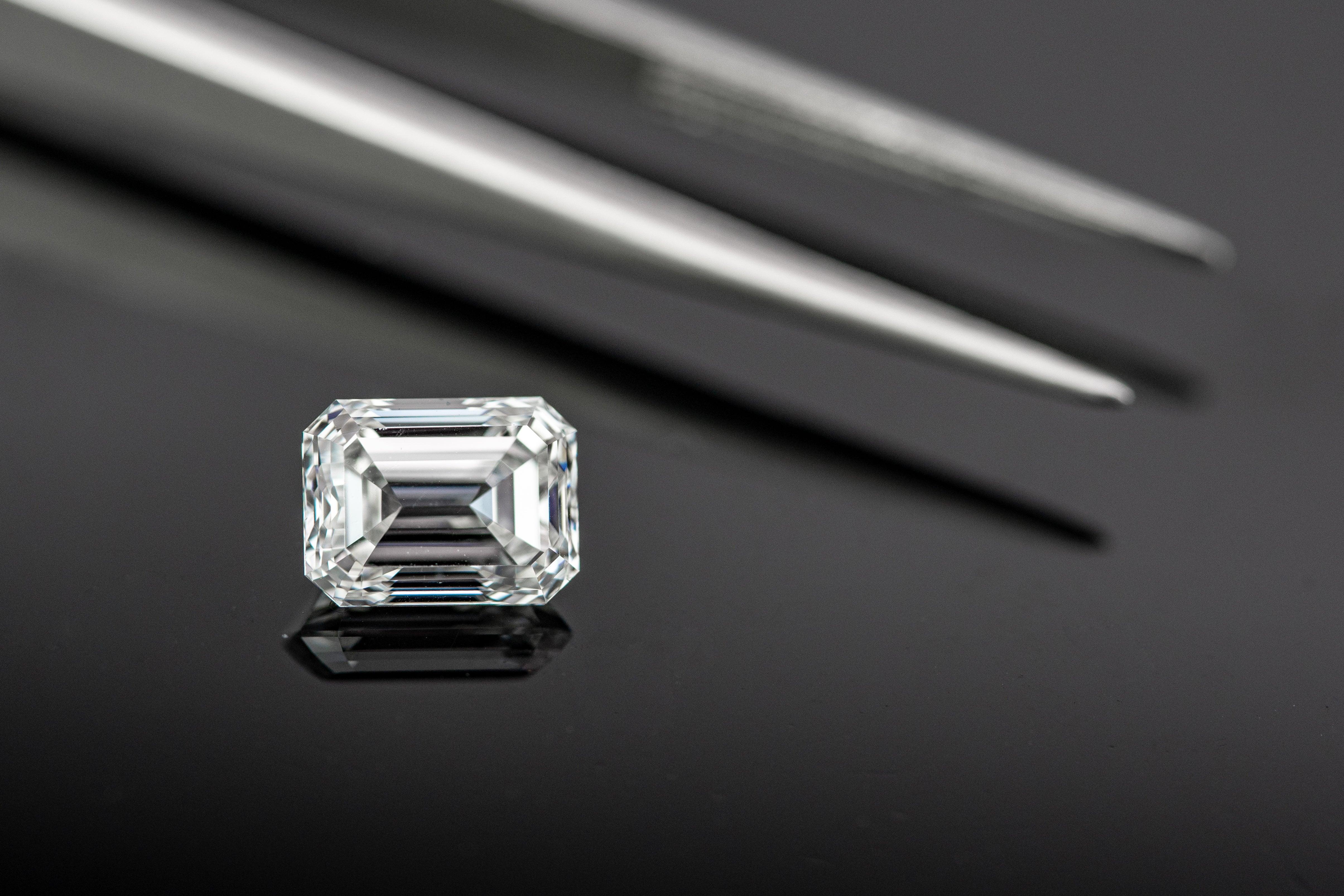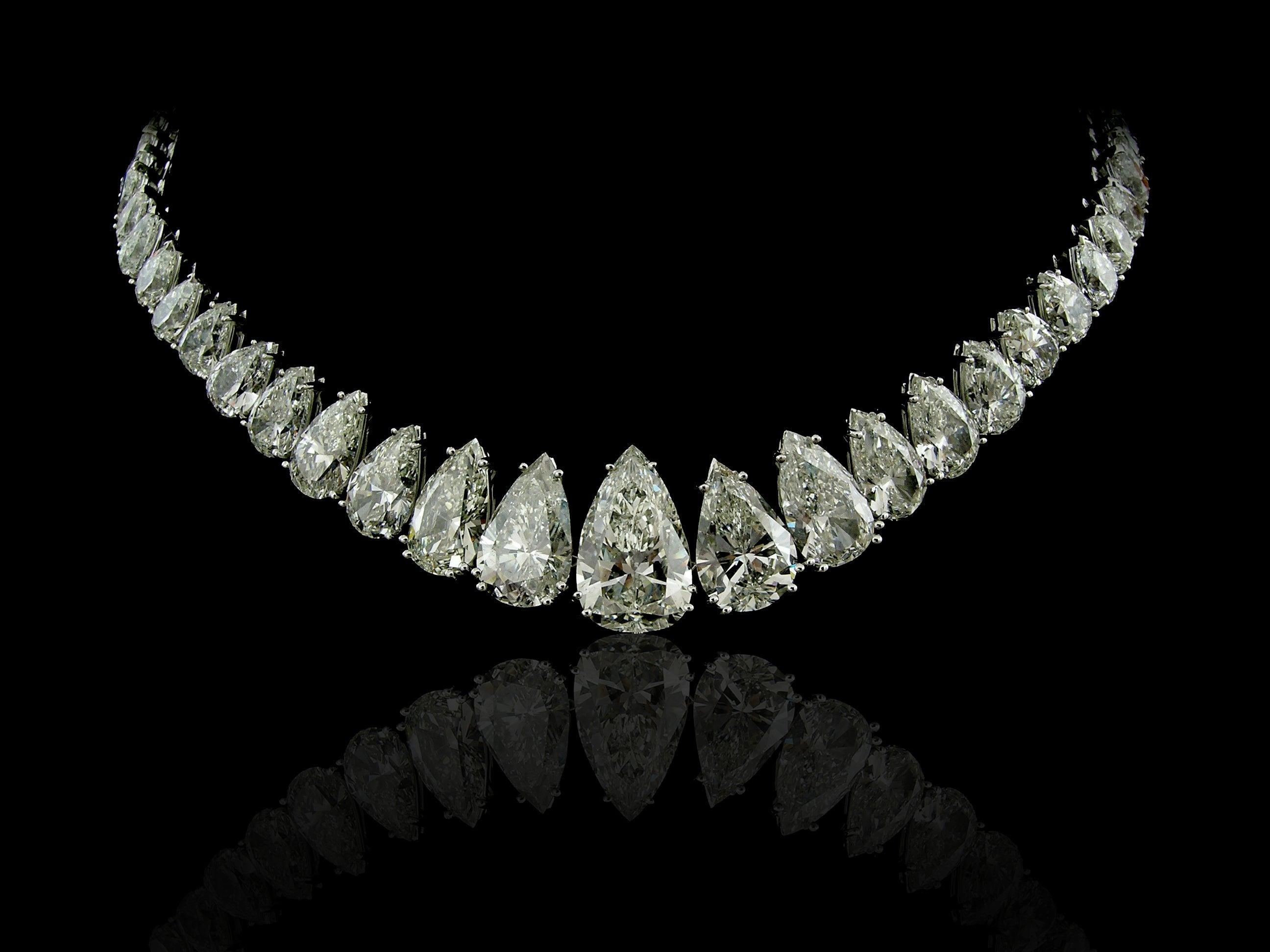
Emerald Cuts

Beloved for their at once austere luster and at the same time inviting fire and brightness, Emerald cuts are prized for diamond jewelry of all kinds and have long been one of the most popular ring diamonds, especially for Royals, nobility, and celebrities.

A step cut commonly used for large diamonds, they are known especially for their brightness, brilliance, and fire, though they lack somewhat in scintillation compared with brilliant-cut stones such as a radiant shape.
Though they existed long before the Art Deco movement that gave them their name, Emerald cuts are emblematic today of the edgy, sophisticated, grace that early 20th-century culture strived for in art, music, literature, and fashion; including, of course, jewelry.
Emerald cuts are one of the oldest fancy-cut diamond styles available today. Originally a style that was indeed commonly used for emeralds, diamond cutters in the 16th century realized that this cut often saved more of the original rough stone; and that the reduced pressure needed to grind and polish this cut prevented chips and fractures from developing during the process. Early on, diamond cutters began cropping the corners of the emerald shape to give it more structural integrity, and today you find examples with more or less material cut from the corner.

Side note: If you find yourself gravitating towards more cropping on the corners and an equal length-to-width ratio, you might prefer the Asccher cut.
When choosing an Emerald Cut, we encourage you to keep the following in mind.
Grading: Emerald cuts are graded by most agencies on clarity, color, and carat weight but not on cut. We’ll explain how to evaluate emerald cut quality yourself later on.
First, let's discuss the other 3 of the 4 Cs.
Emerald cuts’ large and long facets show off the interior of the stone more than almost any other cut. As a result, the color and clarity of a stone cannot be masked. Therefore here at Michael Gabriels, we recommend clarity and color in the highest levels, so no less than a clarity grade of VS1, and a color grade of G.
One great characteristic of Emerald cuts is that since they generally have a larger surface area to depth ratio, they tend to appear larger than other cuts of the same carat weight.
Ratios:
Length to width ratio is an important component of any square or rectangular cut diamond, be it a brilliant or step-cut stone, and is calculated by dividing the length by the width of the stone. For example, a length of 4 and a width of 2 will result in a 1.5 ratio, while a more square stone would be closer to 1, and a more elongated stone would be closer to 2.
Depth and table percentage and the presence or absence of a culet all determine the extent to which light leaks from the stone. A stone that is too deep or too shallow will lose more light. Generally in emerald cuts, light is lost out of a faceted culet, which may appear as a dark spot in the center of the visual when viewed down through the table.
|
Emerald Cut Ratio Recommendations |
|||||
|
Excellent |
Very Good |
Good |
Fair |
Poor |
|
|
Table % |
61-69 |
57-60 or 70-72 |
53-56 Or 73-74 |
51-53 or 75-79 |
<51 or >79 |
|
Depth % |
61-67 |
59-60.9 or 67.1-70 |
57-58.9 or 70.1-74 |
54-56.9 or 74.1-79 |
<54 or >79 |
|
Girdle |
Very slim - slightly thick |
Very thin- thick |
Very Thin – Very Thick |
Extremely Thin – Extremely Thick |
<extremely thin or >extremely thick |
|
Culet |
None |
Very Small |
Small |
Medium |
>Medium |
|
Length/Width Ratio |
1.4-1.5 |
1.3-1.39 or 1.51-1.6 |
1.20-1.29 or 1.61-1.80 |
54-56.9 or 74.1-79 |
<1.15 or >1.90 |

Emerald cuts’ unique look make them a magnificent choice. Let us know if this shape interests you and we will be happy to provide you with options that meet your needs and desires.


